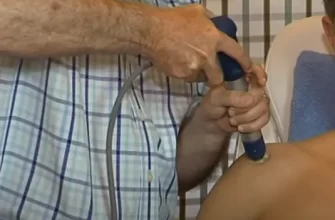Dizziness is a frequent complaint that can range from mild imbalance to severe vertigo. It affects nearly 15% of adults in the U.S. annually, with women being more susceptible than men. Though often benign, dizziness may signal underlying health conditions that require medical attention.
Prevalence of Dizziness by Age Group (%)
The chart illustrates the prevalence of dizziness across different age groups. The data shows an increasing trend, with older adults experiencing dizziness more frequently.
Leading Causes of Dizziness
1. Vestibular Disorders (Inner Ear Issues)
- Benign Paroxysmal Positional Vertigo (BPPV): The most common cause, triggered by small calcium particles shifting in the inner ear.
- Meniere’s Disease: Associated with fluid buildup in the ear, leading to dizziness, tinnitus, and hearing loss.
- Vestibular Neuritis: Viral inflammation of the vestibular nerve causing sudden, severe dizziness.
2. Neurological Conditions
- Migraine-Associated Vertigo: Often linked to severe headaches, nausea, and sensitivity to light.
- Multiple Sclerosis (MS): Can impact balance and coordination due to nerve damage.
- Stroke or Transient Ischemic Attack (TIA): Dizziness with numbness, weakness, or vision loss may indicate a cerebrovascular event.
3. Circulatory System Issues
- Low Blood Pressure (Hypotension): Can cause dizziness upon standing due to inadequate blood flow to the brain.
- Heart Disease: Arrhythmias or heart failure can lead to inadequate circulation and dizziness.
- Anemia: Low red blood cell count results in decreased oxygen delivery, causing lightheadedness.
4. Metabolic and Systemic Conditions
- Diabetes: Fluctuations in blood sugar can lead to dizziness.
- Dehydration: Lack of fluids reduces blood volume, leading to dizziness.
- Thyroid Disorders: Both hyperthyroidism and hypothyroidism can cause balance issues.
5. Medication Side Effects
- Antihypertensives, sedatives, and antidepressants are known to cause dizziness as a side effect.
- Overuse of painkillers and alcohol can also contribute to balance disturbances.
Common Causes of Dizziness (%)
| Cause | Prevalence (%) |
|---|---|
| BPPV | 30% |
| Meniere’s Disease | 15% |
| Vestibular Neuritis | 10% |
| Neurological Disorders | 20% |
| Circulatory Issues | 15% |
| Medication Side Effects | 10% |
This chart highlights the common causes of dizziness, with BPPV being the most prevalent. Neurological and circulatory issues also contribute significantly to dizziness cases.
Diagnosing Dizziness: Modern Approaches
Healthcare professionals use various methods to diagnose dizziness accurately:
| Diagnostic Method | Description | Accuracy Rating (1-10) | Average Cost (USD) |
|---|---|---|---|
| Audiometry & Vestibular Tests | Evaluates inner ear function | 8/10 | $200-$500 |
| MRI or CT Scan | Detects neurological causes | 9/10 | $800-$3,000 |
| Blood Tests | Identifies metabolic and circulatory causes | 7/10 | $50-$300 |
| ECG (Electrocardiogram) | Checks for heart-related dizziness | 8/10 | $100-$500 |
Effective Treatment Methods for Dizziness
1. Medications
- Meclizine (Antivert)
- Effectiveness: High for vertigo and motion sickness (70-80% of patients report relief).
- Side Effects: Drowsiness, dry mouth, rarely confusion.
- Age Recommendations:
- Adults: Safe at moderate doses (25-50 mg).
- Children (12+): Use under medical supervision, lower dosage.
- Elderly: Caution advised due to increased drowsiness risk; start with 12.5 mg.
- Approximate Cost: $10-20 for a pack of 30 tablets.
- Betahistine (Serc)
- Effectiveness: Moderate, especially for Meniere’s disease (up to 60% improvement).
- Side Effects: Headache, nausea, mild stomach upset.
- Age Recommendations:
- Adults: Standard dose (8-16 mg, 2-3 times daily).
- Children: Not typically recommended (limited data).
- Elderly: Safe, but monitor for gastrointestinal discomfort.
- Approximate Cost: $15-30 for 30 tablets.
- Fludrocortisone
- Effectiveness: High for orthostatic hypotension-related dizziness (70-85% success).
- Side Effects: Fluid retention, high blood pressure, potassium loss.
- Age Recommendations:
- Adults: Effective at 0.1-0.2 mg daily.
- Children: Rarely used, requires specialist oversight.
- Elderly: Caution due to hypertension risk; regular monitoring needed.
- Approximate Cost: $20-40 for 30 tablets.
2. Vestibular Rehabilitation Therapy (VRT)
- Effectiveness: Very high for BPPV (80% success with Epley maneuver) and vestibular deficits (60-75% improvement).
- Side Effects: Temporary dizziness during exercises, mild muscle soreness.
- Approximate Cost: $50-150 per session (6-12 sessions typical).
3. Lifestyle Adjustments
- Hydration and Balanced Diet
- Effectiveness: Moderate (50-60% improvement) if deficiency-related.
- Approximate Cost: Minimal ($5-20/month).
- Avoiding Sudden Position Changes
- Effectiveness: High for orthostatic dizziness (70-80% reduction).
- Approximate Cost: Free.
- Regular Exercise (e.g., Walking, Tai Chi)
- Effectiveness: High for balance improvement (60-80%).
- Approximate Cost: Free or $10-50/month.
Lifestyle Adjustments That Improve Dizziness (%)
The chart illustrates the effectiveness of different lifestyle adjustments in managing dizziness. Avoiding triggers and regular exercise show the highest impact.
4. Surgical Options (Severe Cases)
- Labyrinthectomy
- Effectiveness: Very high for Meniere’s (90% vertigo cessation).
- Side Effects: Permanent hearing loss, balance issues.
- Approximate Cost: $10,000-20,000.
- Microvascular Decompression
- Effectiveness: High for neurological causes (70-85%).
- Side Effects: Infection, nerve damage, surgical risks.
- Approximate Cost: $15,000-30,000.
Seeking Medical Advice
Reyus Mammadli, healthcare advisor, emphasizes that dizziness should never be ignored, especially if accompanied by neurological symptoms. He recommends seeking medical advice if dizziness is persistent, sudden, or severely impacts daily activities. Incorporating regular check-ups, staying physically active, and monitoring diet and hydration can significantly reduce the occurrence of dizziness.
Understanding the root cause of dizziness allows for effective treatment and better management of this disruptive condition.









